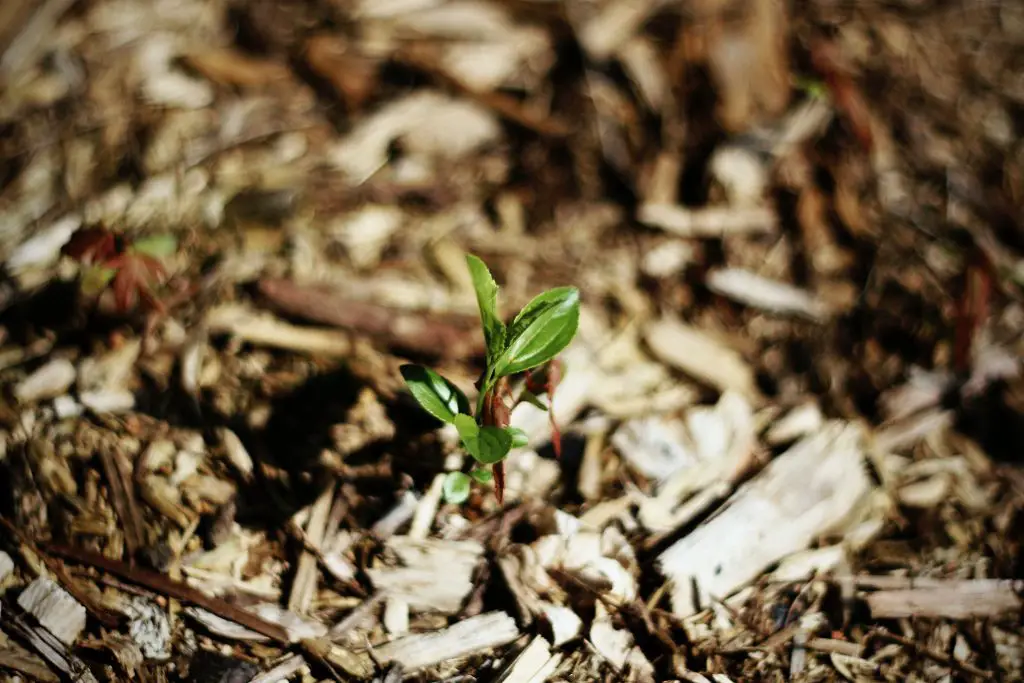Can Plants Grow Through Mulch? Most gardening books and blogs recommend applying a layer of mulch to garden beds to help retain moisture. But what happens when a thick layer is applied over things like bulbs? Will the plants grow through the mulch?
Plants in most cases will grow through a relatively thick layer of mulch. The clear-cut evidence of this can be seen with weeds that frequently pop up even through the most heavily mulch areas of the garden. What determines whether a plant makes it through a layer of mulch is the level of energy stored within the plant. For plants such as tulips which have significant stored energy within a bulb growing through a layer of mulch is generally not a problem.
Mulching heavily can sometimes cause problems if it is a relatively moist environment. Wet conditions can cause collar rot on the stems of plants because the wet mulch is in constant contact with the plant. To reduce the chances of this occurring it is best to select a mulch with limited capacity to retain moisture. Choices for this include pea straw, sugar cane, and coarse wood chips.
However, it is important to note that using wood chips has one distinct disadvantage over other mulches, it tends to temporarily remove nitrogen from the soil. This is because the wood chips are a nitrogen deficient material, which results in the microorganisms needing to take nitrogen from the soil during the decomposition of the mulch.
This deprives the soil of nitrogen in the short term which can effect annual plants such as vegetables. However, the nitrogen is ultimately returned to the soil when the microorganisms die.

Can You Stop Weeds Growing Through Mulch Completely?
Mulch can be used to suppress weeds but it certainly won’t stop them completely. The reason for this is that even if the weeds are completely smothered in 3 ft of mulch weed seeds will still find their way into the mulch from above from things like birds and other animals.
Additionally, there are some extremely tenacious perennial weeds, like bindweed that are extremely difficult to stop. So what is the best way to mulch to minimize weeds?
The best way that I have seen is to take the no-dig approach which minimizes weeds and the amount of work required to control them. The no-dig method can be applied to new beds or existing ones. The basic tenant of this approach is to disturb the soil as little as possible.
This is achieved by placing a layer of compost annually on the garden beds. The benefit of using compost as a mulch is that it also serves to feed the soil, which means that no other nutrients need to be added. The second benefit of using compost is that it allows a dutch hoe to be used to remove small weeds which is significantly faster than hand weeding.
No-Dig is also a useful approach for starting a new garden bed even if there is a significant number of weeds present. To kill off the weeds it is necessary to place a thick layer of cardboard on the area before placing the 6 to 8-inch layer of compost on top which can be planted in to immediately.
When placing the layer of cardboard down on the ground it is important to ensure that there are no gaps between the pieces of cardboard that will allow weeds to grow through. It is also advisable to create a 6 to 8-inch border around the outside of the garden bed to stop weeds from invading.
The cardboard serves as a temporary barrier that excludes light for a period of around 6 months which is usually enough to kill most weeds. Once the vast majority of weeds have been killed off it is important to regularly maintain the beds to ensure that the weeds do not become established again.
To see a practical example of no-dig in action I highly recommend that you watch the video below from Charles Dowding which provides a lot of useful tips on how to establish a no-dig garden.
